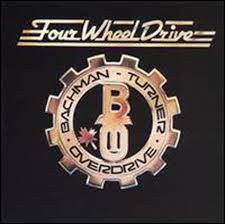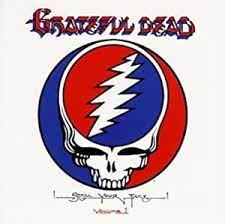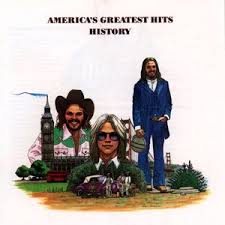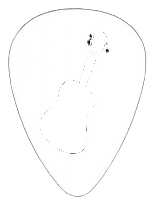🎸
70s Soft Rock Songs
Learn to Play These Smooth Guitar Classics
If you love mellow melodies, heartfelt lyrics, and smooth guitar grooves, this collection of 70s soft rock songs is the perfect place to start. e.
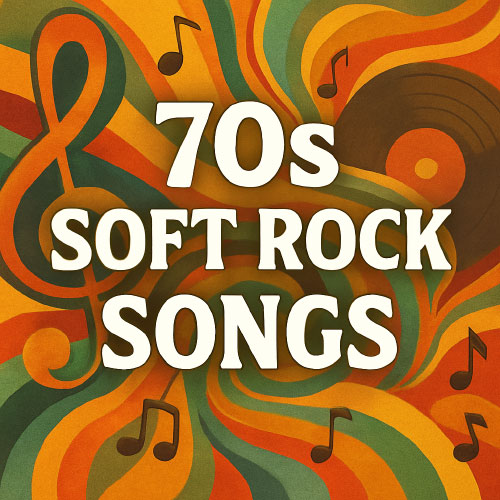
Featuring laid-back anthems and radio favorites from artists like Air Supply, Boz Scaggs, Player, and Little River Band, these tunes defined a softer side of rock that resonated with millions.
Each lesson includes clear chord charts, rhythm guidance, and video walkthroughs designed to help you master these timeless tracks. Whether you're jamming solo or playing for friends, these soft rock staples sound great on acoustic guitar.
🎸 Overview Video -
“Watch This Preview of My
70s Soft Rock Songs”
70s Soft Rock Songs List
1. Ace --- How Long2. Air Supply --- All Out Of Love, Even The Nights Are Better, Lost In Love, Making Love Out Of Nothing At All
3. Ambrosia --- How Much I Feel
4. Boz Scaggs --- Lido Shuffle, Lowdown, Look What You've Done To Me, We're All Alone
5. Climax Blues Band --- Couldn't Get It Right
6. Eric Carmen --- Never Gonna Fall In Love Again
7. Little River Band --- Cool Change, Down On The Border, Lady, Reminicing
8. Player --- Baby Come Back
9. Rupert Holmes --- Escape
10. Stephen Bishop --- It Might Be You, On And On
11. Walter Egan --- Magnet And Steel
1. Ace Songs - Learn To Play On Guitar
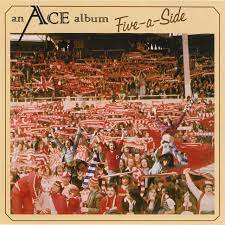
How Long was from the British band Ace which was formed in 1972. One of their most well-known songs is "How Long," which was released in 1974 and became a major hit, reaching the top 20 in the United States and the top 3 in the UK.
The band was led by singer and guitarist Paul Carrack, who later had a successful solo career and became known for his soulful voice.
Although "How Long" remains their most famous song, Ace released several albums throughout the 1970s before disbanding in 1977.
Chords And Strumming
I play this one in standard tuning with a capo 3rd fret using the rhythm pattern down up down up down down and repeat. There is some picking blended into the rhythm while playing the chords G, Fdim, Am, Em, Dm and Gsus.
Guitar Lesson Details - (chords & lyrics sheet incl with lesson)
Back To Song List
2. Air Supply Songs - Learn To Play On Guitar
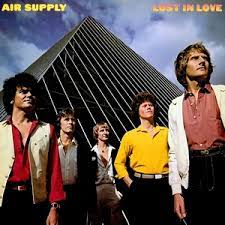
All Out Of Love was one of three singles from Air Supply's Lost In Love album from 1980.
This one reached #2 in both Canada and the US and peaked at #9 in Australia, #10 in Ireland and #11 in the UK.
Chords And Strumming
I play this with a capo 2nd fret but the original key is with no capo. The chords here are a C, G, F, F/A, Em, G6, Am, Am7 and a Dm. No lead here with a 1-2-3-4 up down down up and repeat rhythm as well as a down up down up rhythm pattern.
Guitar Lesson Details - (chords & lyrics sheet incl with lesson)
Back To Song List
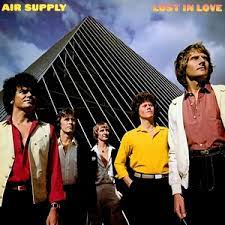
Even The Nights Are Better is featured on the same album (Lost in Love for initial two; “Making Love…” came from the follow-up The One That You Love).
These songs highlight the duo's cascade of romantic hits in the early '80s.
Chords And Strumming
This song has a two fret key change so there are quite a few chords played in standard tuning with a capo 4th fret. And you have two rhythm patterns with the first being a 1-2-3 up down up down up where 12-3 are arpeggio notes of the chord you are on. Then as you hit the chorus you'll play a down up pause up down up pause up and repeat. A bit of lead here with the chords A, Dm, G6, C, G, E, D, Cmaj7, Fmaj7, A7, Dm7, Gmaj7, B7, Em and a Dmaj7.
Guitar Lesson Details - (chords & lyrics sheet incl with lesson)
Back To Song List
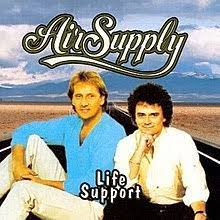
Lost In Love was the first #3 hit in New Zealand for Air Supply when it came out in 1979 from their Life Support album.
It was re-released again in 1980 from their album Lost In Love and scored a #1 in both Canada and the US with that re-release.
Chords And Strumming
I play this one in standard tuning with a 1-2-3 up down up down up rhythm pattern where 1-2-3 are arpeggio notes of the chord I'm on. Some lead required in this one with the chords C, Cmaj7, Am, Bm, Em, and a C/C#.
Guitar Lesson Details - (chords & lyrics sheet incl with lesson)
Back To Song List
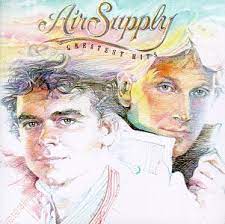
Making Love Out Of Nothing At All was released as the only single from their Greatest Hits album from 1983.
The song was a #2 in the US and a #3 in Canada.
Chords And Strumming
Another here in standard tuning with some lead required and a super high one to sing properly. For chords here you'll need a G, Em, C, D, Dsus, F, Am and a Bm. For rhythm play a down down up down up down up down up and repeat as you move through the chords. Some down strokes and quick shuffles also in places.
Guitar Lesson Details - (chords & lyrics sheet incl with lesson)
Back To Song List
3. Ambrosia - Learn To Play On Guitar

How Much I Feel is a 1978 song by the American rock band Ambrosia. Written by guitarist and vocalist David Pack, it was released in the summer of 1978 as the lead single from their third album, Life Beyond L.A.
The song reached number three on the Billboard Hot 100 chart and stayed at number two for three weeks on the Cash Box Top 100.
Chords And Strumming
This one has two rhythm patterns. One is the primary one being down up pause down up down up down up and the other is down strokes when you reach the bridge. The original key is two frets higher but good luck singing there. In standard tuning with the chords Gmaj7, Dmaj7, Em, A7, Bm, Esus, A, Gb Bm/A and a Gbsus.
Guitar Lesson Details - (chords & lyrics sheet incl with lesson)
Back To Song List
4. Boz Scaggs - Learn To Play On Guitar
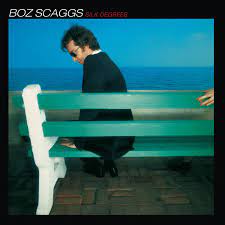
Lido Shuffle is one of Boz Scaggs' most enduring hits, featured on his acclaimed 1976 album Silk Degrees.
Released as a single in 1977, the song became a major success, climbing to No. 11 on the Billboard Hot 100 and showcasing Scaggs' ability to blend blue-eyed soul, rock, and funk into a slick, radio-friendly sound. Written by Scaggs and keyboardist David Paich (who would later co-found the band Toto), the track is known for its upbeat groove and story of a smooth-talking drifter named Lido.
The song helped cement Silk Degrees as a platinum-selling album and a cornerstone of 1970s soft rock. Its infectious energy and strong musicianship have made “Lido Shuffle” a fan favorite in both concert settings and classic rock radio playlists.
Chords And Strumming
The chords for this song are F, G, C, D, A#, D#, Bm and a Dsus in standard tuning with no lead work required.I'm playing a down up down up rhythm pattern with some shuffle strumming here and there.
Guitar Lesson Details - (chords & lyrics sheet incl with lesson)
Back To Song List
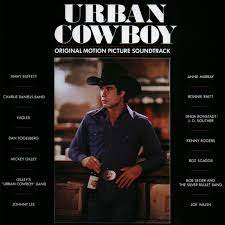
Look What You've Done To Me is a smooth, emotional ballad by Boz Scaggs, recorded for the 1980 film Urban Cowboy starring John Travolta and Debra Winger.
Released as a single that same year, the song became a Top 20 hit, reaching No. 14 on the Billboard Hot 100. It features lush backing vocals from members of the Eagles—most notably Don Henley, Glenn Frey, and Timothy B. Schmit—which added a signature West Coast sound to the track.
Written by Scaggs and Grammy-winning producer David Foster, the song showcases a softer, more romantic side of Scaggs, marking a departure from the funkier grooves of Silk Degrees. Its inclusion in the Urban Cowboy soundtrack helped broaden his appeal during the early '80s soft rock boom.
Chords And Strumming
I play this one in standard tuning with a down down up down up down up down up down up and repeat rhythm pattern with no lead work. The chords you'll need here are Em, Am, Cmaj7, Bm, Gm, Dm, G, D7, C and an Adim.
Guitar Lesson Details - (chords & lyrics sheet incl with lesson)
Back To Song List
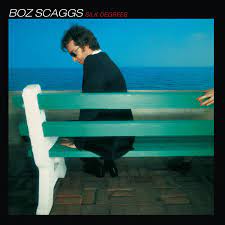
Lowdown is one of Boz Scaggs' most iconic hits, featured on his 1976 breakthrough album Silk Degrees.
Co-written with keyboardist David Paich (who would later co-found the band Toto), the song blends slick jazz-funk with a smooth R&B groove that helped define the blue-eyed soul sound of the era. Released as a single, “Lowdown” became a major success, peaking at No. 3 on the Billboard Hot 100 and earning Scaggs a Grammy Award for Best R&B Song in 1977.
With its syncopated rhythm, silky production, and tasteful guitar licks, the track became a staple of both pop and soul radio, cementing Scaggs’ crossover appeal and critical acclaim.
Chords And Strumming
No lead here but a few riffs as you play through the chords Em, A7, Dmaj,7, Dmaj7/Db, Cmaj7, B7 and Gbm. For rhythm I'm playing a down down up down shuffle rhythm.
Guitar Lesson Details - (chords & lyrics sheet incl with lesson)
Back To Song List
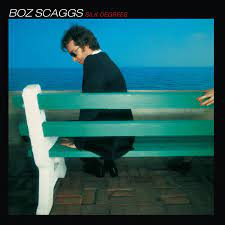
We're All Alone was originally released on Boz Scaggs' 1976 album Silk Degrees.
“We’re All Alone” is a tender ballad that showcased his smooth vocal delivery and songwriting versatility. Although it wasn’t released as a single by Scaggs himself, the song gained massive popularity when Rita Coolidge covered it in 1977 — her version reached No. 7 on the Billboard Hot 100 and became a soft rock staple.
Scaggs has shared in interviews that he initially intended the song as a gentle closer for Silk Degrees, which it ultimately became. With its orchestral arrangement and heartfelt lyrics, “We’re All Alone” remains one of his most beautifully crafted compositions, resonating deeply with fans of mellow 1970s rock and pop.
Chords And Strumming
I use a capo 3rd fret here in standard tuning with a root root down up down up rhythm pattern in standard tuning with some lead work. The chords you'll need are G, Am7, G6, VB7, G7, C, D, Bm, Em, Dsus, Am/A# and an F.
Guitar Lesson Details - (chords & lyrics sheet incl with lesson)
Back To Song List
5. Climax Blues Band - Learn To Play On Guitar
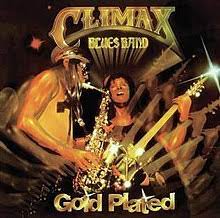
Couldn't Get It Right released this song in 1976 as a single from their album "Gold Plated".
The song came out of nowher according to bassist Derek Holt and the song went to #10 in the UK, #8 in Canada and #3 in the US.
Chords And Strumming
This song is played in standard tuning with some lead and with a quick shuffle and then and down down up down down up and repeat pattern for rhythm. The chords here are Bm, A, G, Esus, E and a D.
Guitar Lesson Details - (chords & lyrics sheet incl with lesson)
Back To Song List
6. Eric Carmen - Learn To Play On Guitar
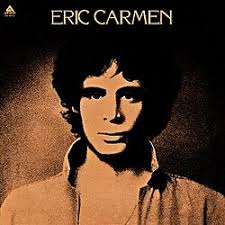
Never Gonna Fall In Love Again was released in 1976 and was the second single from Eric Carmen’s self-titled debut solo album.
The song, built around a melody adapted from Rachmaninoff’s Symphony No. 2, showcases Carmen’s classical influences blended with soft rock sensibilities. It reached #11 on the Billboard Hot 100 and climbed even higher on the Adult Contemporary chart, peaking at #1.
Known for its melancholy tone and lush orchestration, the track further solidified Carmen’s transition from his Raspberries frontman days into a successful solo balladeer. Its heartfelt lyrics and sweeping arrangement made it a staple of 70s soft rock radio.
Chords And Strumming
You can play this one in standard pitch tuning with a down down up down up down up rhythm pattern and with some lead. For chords you'll play a G, Cmaj7, B7, Em, Am, C, G7, Bm, Am7, D7, Gmaj7, Gb and an E. I play a capo 3rd fret.
Guitar Lesson Details - (chords & lyrics sheet incl with lesson)
Back To Song List
7. Little River Band - Learn To Play On Guitar
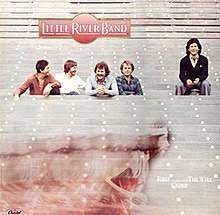
Cool Change is a track from the Little River Band off of their 1979 album First Under The Wire.
The song hit #8 in the US but did not chart in the bands homeland of Australia.
Chords And Strumming
This one starts off with arpeggio in standard tuning but eventually you get to a rhythm of down down up down up down up and repeat. Some lead, some slide work and with the chords A, D, E, Esus, G, D/Gb and a C.
Guitar Lesson Details - (chords & lyrics sheet incl with lesson)
Back To Song List
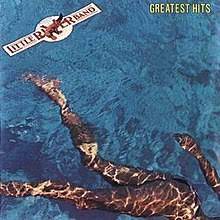
Down On The Border is from the 1982 album, Greatest Hits, from The Little River Band.
This track charted in Australia only reaching #7 on the rock charts.
Chords And Strumming
I play this one in standard tuning with a root down up root up down up rhythm pattern and a little bit of lead. For chords you'll need an Am, F, E and a Dm.
Guitar Lesson Details - (chords & lyrics sheet incl with lesson)
Back To Song List
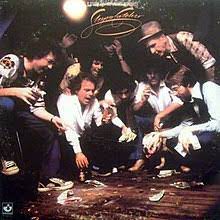
Lady was released as a single from the album by Little River band entitled Sleeper Catcher back in 1978.
The song peaked at #7 in the US and hit #46 in Australia.
Chords And Strumming
Play this one in drop D tuning and up two frets with a capo 2nd if you can sing it there but it's a bit high for me in that key of A. So the chords here are G, F, C, and a D with mainly arpeggio and some chop rhythm when you hit the chorus. A bit of lead in this one also.
Guitar Lesson Details - (chords & lyrics sheet incl with lesson)
Back To Song List
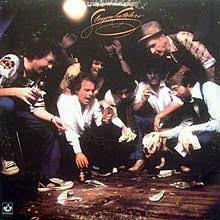
Reminiscing is also a track from the 1978 album Sleeper Catcher by the Little River Band.
The song managed to reach #3 in the US and #35 in Australia. This song was written by lead guitarist Graeham Goble.
Chords And Strumming
This one is a bit too high to sing so I'm on the low end of this one vocally played in standard tuning and with a shuffle pattern. No lead here with the chords B, A, D#, A#, Db, D, G, C7, B7, Gm and a Dsus.
Guitar Lesson Details - (chords & lyrics sheet incl with lesson)
Back To Song List
8. Player - Learn To Play On Guitar
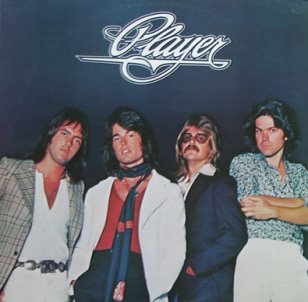
Baby Come Back is a song by the British-American rock band Player. It came out in late 1977 as the lead single from their first album. The song became a big hit, reaching #1 on the US Billboard Hot 100 for three weeks in January 1978 and #10 on the R&B charts. It was written and performed by Peter Beckett and J.C. Crowley, the founders of Player.
According to the American Top 40 replay on November 5, 1977, "Baby Come Back" was written after two band members broke up with their girlfriends.
Chords And Strumming
This one played in standard tuning with a down down up down up down - down up down up down up rhythm pattern. You'll have a bit of lead in her with the chords, Em7, Gbm, B7, A6/B, Gmaj7, Cmaj7, Fmaj7, Am, Asus2 and a Bm.
Guitar Lesson Details - (chords & lyrics sheet incl with lesson)
Back To Song List
9. Rupert Holmes - Learn To Play On Guitar
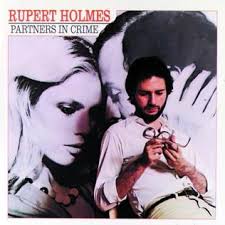
Escape (The Piña Colada Song)” became a surprise chart-topper for Rupert Holmes in 1979, serving as the lead single from his album Partners in Crime.
Known for its instantly recognizable chorus and cheeky storyline about rekindled romance through a personal ad, the song reached #1 on the Billboard Hot 100 in December of that year.
Interestingly, it was the final U.S. number-one song of the 1970s, making it a fitting cultural sendoff for the decade.
Though Holmes was already an established songwriter and playwright, Escape became his signature hit and remains a beloved soft rock classic with an enduring pop culture presence.
Chords And Strumming
I play this one a bit higher with a capo 2nd fret but the original key is with no capo but it's too high for me vocally. Only a C, C7 and an F in this one but lots of slides in between and some lead. Play down down up down up down up rhythm pattern if you ignore the slide work involved in standard tuning.
Guitar Lesson Details - (chords & lyrics sheet incl with lesson)
Back To Song List
10. Stephen Bishop - Learn To Play On Guitar
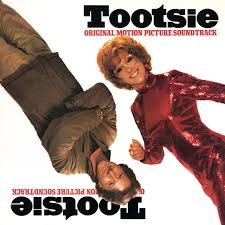
It Might Be You is a soft rock ballad recorded by Stephen Bishop for the 1982 romantic comedy Tootsie, starring Dustin Hoffman.
Composed by Dave Grusin with lyrics by Alan and Marilyn Bergman, the song became a surprise hit and one of Bishop’s most beloved tracks. It peaked at #25 on the Billboard Hot 100 and earned an Academy Award nomination for Best Original Song in 1983.
With its gentle melody, reflective lyrics, and Bishop’s tender vocal delivery, the song perfectly captured the emotional tone of the film and has since become a staple of 1980s love songs.
Chords And Strumming
This one is in standard tuning and mostly arpeggio playing all the way through and a high song. No lead but with plenty of chords including G, C, D, D7, G6, B7, Em, A7, Am7, C#, Gdim, Bm, Dm, Am, Cm, Dmaj7 and a Dm7.
Guitar Lesson Details - (chords & lyrics sheet incl with lesson)
Back To Song List
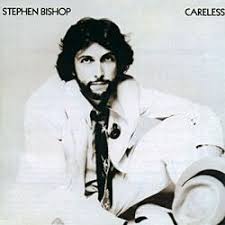
On And On is Stephen Bishop’s breakout hit from his 1977 debut album Careless. Blending soft rock with a breezy, Caribbean-influenced rhythm, the song became a Top 20 hit, peaking at #11 on the Billboard Hot 100.
It helped establish Bishop as a singer-songwriter during the height of the 1970s soft rock era. The lyrics tell the story of heartbreak and resilience with warm, melodic charm, and the song’s smooth vibe made it a staple on adult contemporary radio.
“On and On” remains one of Bishop’s most recognizable and enduring tracks.
Chords And Strumming
This one is a bit of a high sing and I play this one in standard tuning with a capo 2nd fret with a down down up down down up down up and repeat pattern with a bit of a shuffle. No lead with the chords A, Gbm, Bm, E7, Gb, Esus, Gb7, Am7, Dmaj7, Dbm and a B7.
Guitar Lesson Details - (chords & lyrics sheet incl with lesson)
Back To Song List
11. Walter Egan - Learn To Play On Guitar
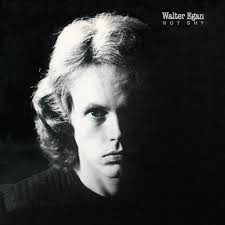
Magnet And Steel is a track on the 1978 album entitled Not Shy, released by Walter Egan. He scored and #8 hit in the US and a #9 in Canada with this song, Stevie Nicks and Lindsay Buckingham from Fleetwood Mac sang back up vocals on this track as well.
Back To Song List
From the silky harmonies of Ambrosia and Climax Blues Band to the emotional ballads of Eric Carmen and Stephen Bishop, the 1970s gave us a goldmine of easygoing rock classics.
These songs continue to hold a special place in music history—and now you can bring them to life on your guitar. Dive in, explore each lesson, and rediscover the magic of 70s soft rock one strum at a time.
If you liked this rock bands from the 70s Vol 1 page you might also like ... (click images)
Acoustic Versions Of Rock Songs
